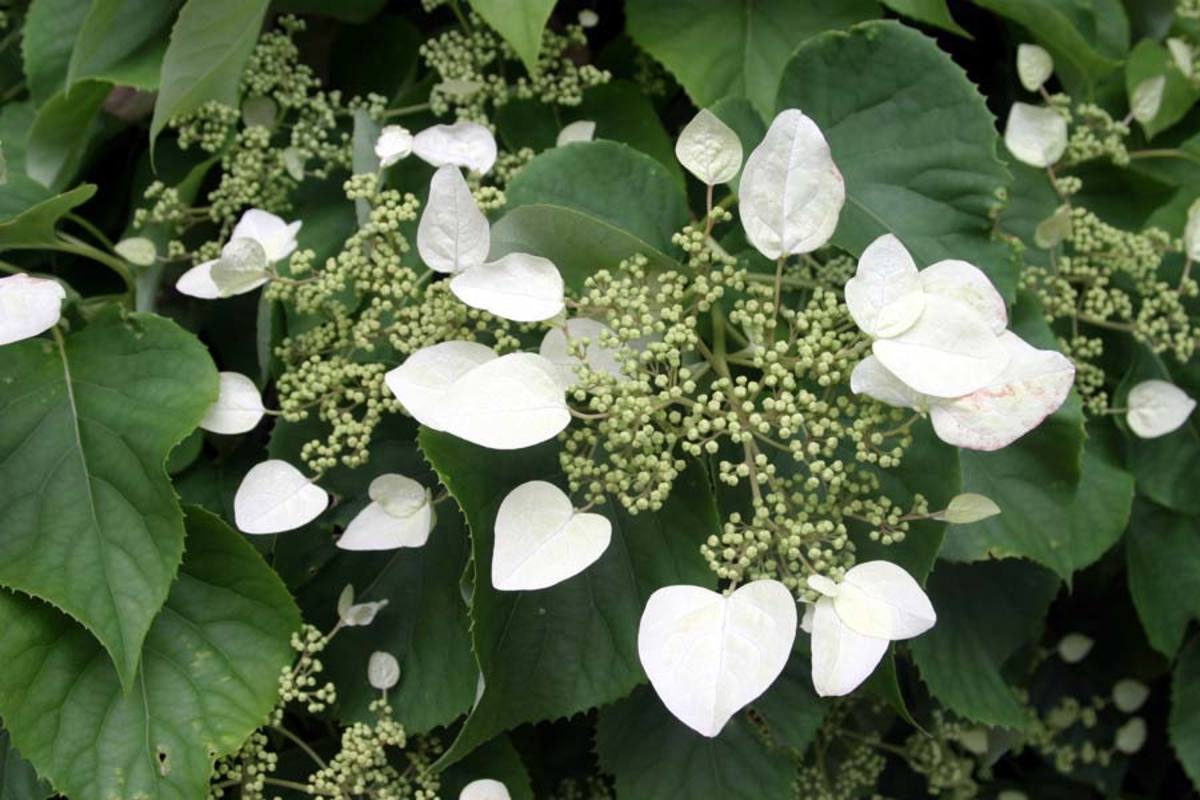Climbing Hydrangeas: The Versatile Vine That Will Bloom Your Garden
Climbing Hydrangeas: The Versatile Vine That Will Bloom Your Garden
Climbing hydrangeas are a beautiful and versatile vine that can add a touch of elegance to any garden. They are known for their fragrant white lace-cap flowers, which bloom in late spring or early summer. Climbing hydrangeas can also be grown as ground cover, making them a great choice for shady areas.
Here are some of the benefits of growing climbing hydrangeas:
- They are easy to care for.
- They can grow in a variety of conditions, including shade and partial shade.
- They are drought tolerant once established.
- They are deer resistant.
- They have a long lifespan.
If you are looking for a beautiful and low-maintenance vine for your garden, climbing hydrangeas are a great option.
Here is a more detailed look at the different types of climbing hydrangeas, how to care for them, and how to use them in your garden:
Types of Climbing Hydrangeas
There are two main types of climbing hydrangeas:
- Hydrangea anomala subsp. petiolaris: This is the most common type of climbing hydrangea. It is native to Europe and Asia, and it can grow up to 30 feet tall. It has glossy green leaves and white lace-cap flowers.
- Schizophragma hydrangeoides: This type of climbing hydrangea is also known as the Japanese climbing hydrangea. It is native to Japan and China, and it can grow up to 20 feet tall. It has heart-shaped leaves and white, pink, or blue flowers.
How to Care for Climbing Hydrangeas
Climbing hydrangeas are relatively easy to care for. They need moist, well-drained soil and partial shade. They should be watered regularly, especially during the summer months. They should also be fertilized in the spring and fall.
How to Use Climbing Hydrangeas in Your Garden
Climbing hydrangeas can be used in a variety of ways in your garden. They can be grown on a trellis, wall, or fence. They can also be grown as ground cover. Climbing hydrangeas are a great way to add height and interest to your garden. They can also be used to hide unsightly objects.
Here are some ideas for using climbing hydrangeas in your garden:
- Grow them on a trellis to create a stunning vertical display.
- Use them to cover a wall or fence.
- Grow them as ground cover to create a lush, green carpet.
- Use them to hide an unsightly tree stump or other object.
- Plant them near a patio or deck to create a shady spot for outdoor entertaining.
Conclusion
Climbing hydrangeas are a beautiful and versatile vine that can add a touch of elegance to any garden. They are easy to care for and can grow in a variety of conditions. If you are looking for a beautiful and low-maintenance vine for your garden, climbing hydrangeas are a great option.
FAQ of climbing hydrangea
Q: Where should I plant a climbing hydrangea?
A: Climbing hydrangeas prefer to be planted in moist, well-drained soil in partial shade. They can tolerate full sun, but the flowers will not last as long. Avoid planting in areas where the soil is prone to drying out, as this can stress the plant.
Q: How do I care for a climbing hydrangea?
A: Climbing hydrangeas are relatively easy to care for. Water them regularly, especially during hot, dry weather. Fertilize them in the spring with a balanced fertilizer. Prune them in the summer or fall after they have finished blooming.
Q: When does a climbing hydrangea bloom?
A: Climbing hydrangeas typically bloom in late spring or early summer. The flowers can last for several weeks.
Q: How do I propagate a climbing hydrangea?
A: Climbing hydrangeas can be propagated by layering or from cuttings. Layering is the easiest method. To layer a climbing hydrangea, simply bend a stem down to the ground and bury it. The stem will eventually root and form a new plant.
Q: What are some common problems with climbing hydrangeas?
A: Some common problems with climbing hydrangeas include:
- Leaf spot: This is a fungal disease that can cause brown spots on the leaves. To treat leaf spot, remove affected leaves and spray the plant with a fungicide.
- Pests: Climbing hydrangeas can be susceptible to pests such as aphids, scale, and spider mites. To control pests, spray the plant with insecticidal soap or neem oil.
- Drought stress: Climbing hydrangeas are susceptible to drought stress. If the soil dries out too much, the leaves will wilt and the plant may die. To prevent drought stress, water the plant regularly, especially during hot, dry weather.
Image of climbing hydrangea
- Image 1: A climbing hydrangea vine growing up a trellis, with large white flowers in bloom.

- Image 2: A close-up of a climbing hydrangea flower, showing the delicate petals and the dark green leaves.

- Image 3: A climbing hydrangea in full bloom, with pink and blue flowers cascading down a wall.
- Image 4: A climbing hydrangea planted in a garden, with its flowers providing a splash of color against the green foliage.
- Image 5: A climbing hydrangea used as a groundcover, with its leaves providing a lush green carpet.

Post a Comment for "Climbing Hydrangeas: The Versatile Vine That Will Bloom Your Garden"